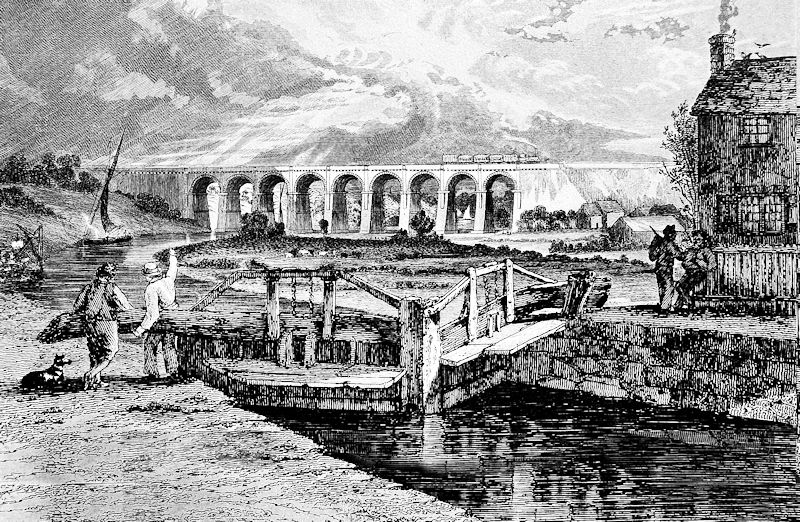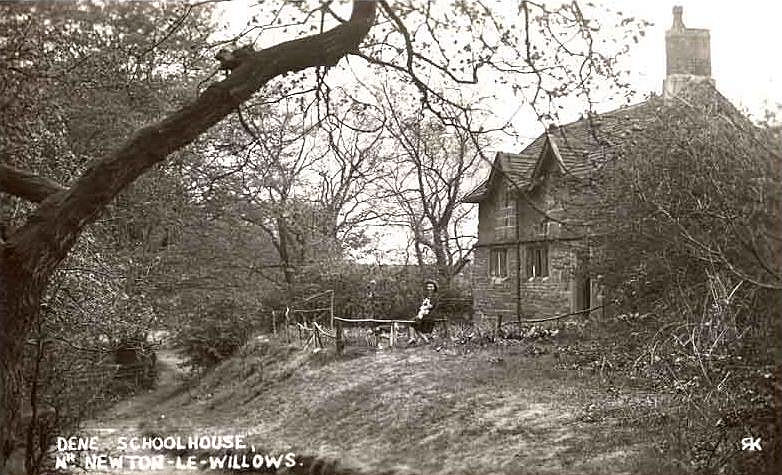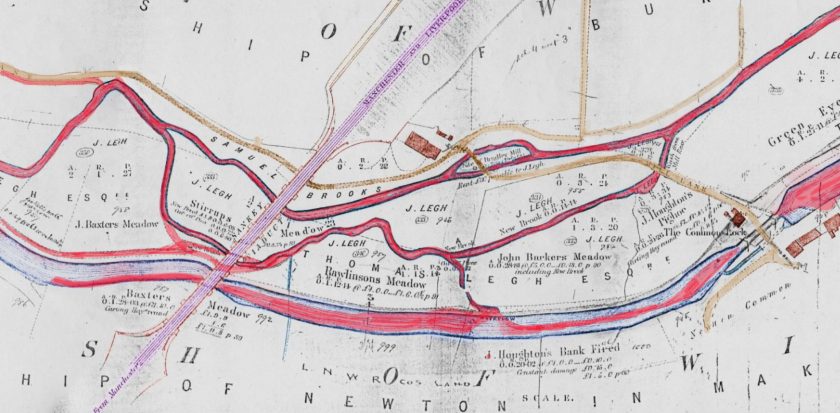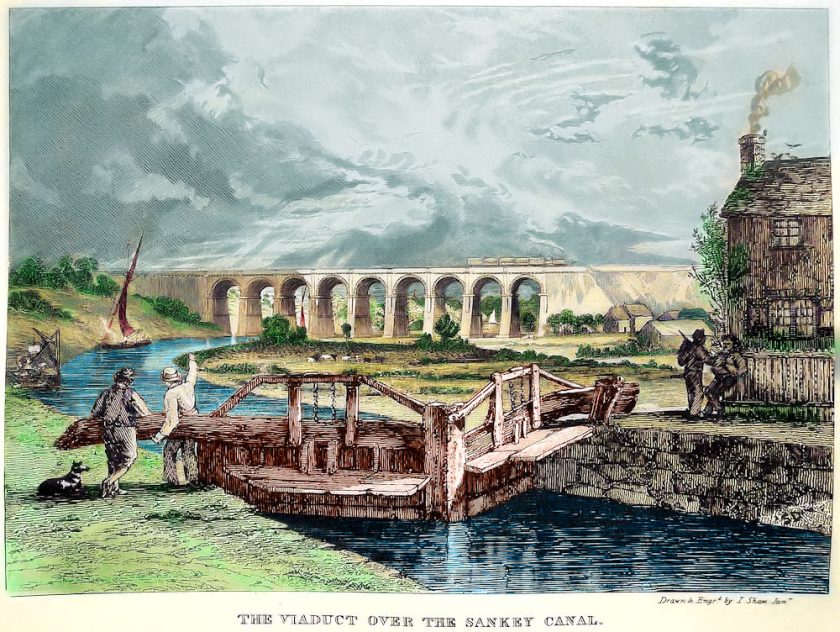VIEW OF THE VIADUCT OVER THE SANKEY CANAL. PLATE II.
Through the valley of Sankey, about half way between Liverpool and Manchester, was cut the first canal for hydraulic conveyance in England; and through it also flows a small river. From the locks of the canal, the Railway Viaduct is seen to the best advantage, and from this point was the view taken; but the effect from every part here is truly delightful. Over this valley—its rivulet and canal—and the topmasts and high peaks of the barges—is carried the Railway, on an elegant and simple Viaduct of nine arches, of 50 feet span each. It is built principally of brick, with stone facings; the height from the parapet to the water is 70 feet, and the width of the Railway, between the parapets, is 25 feet; it rests upon piles, of which about 200, varying from 20 to 30 feet in length, were driven hard into the foundation site of each of the ten piers, the ground being sandy and alluvial to a depth of 30 feet. The expense of the whole of this beautiful structure was £45,208 18s. 6d., and the approach to it is along a stupendous embankment, formed chiefly of the clay which was dug out of the high lands surrounding this picturesque valley. From the bridge on which the rails are placed, an extensive prospect is gained; on a rising ground, to the left coming from Liverpool, the eye rests with pleasure on the stands of Newton Race Course; and turning to the south, rises in the distance the spire of Winwick Church; but casting our eyes on the valley beneath, is seen a pleasing and variegated landscape, with its little river undulating through a rich and fertile country, and the canal replete with vessels sailing far below the feet of the traveller, conveying merchandise to and from the coast; and giving a vivid picture of the inland navigation of the Sankey Canal.
This is my photo which I have coloured from the book, Views of the Liverpool to Manchester Railway



